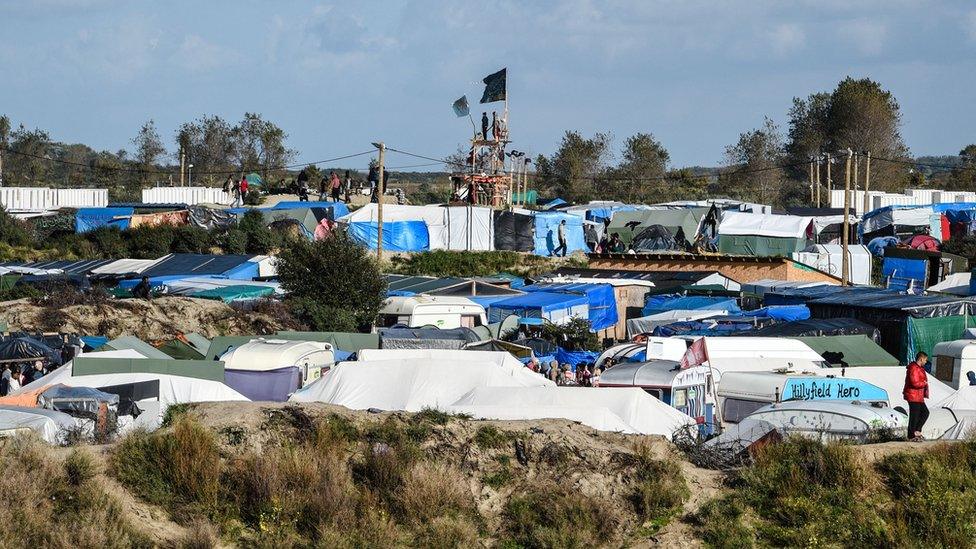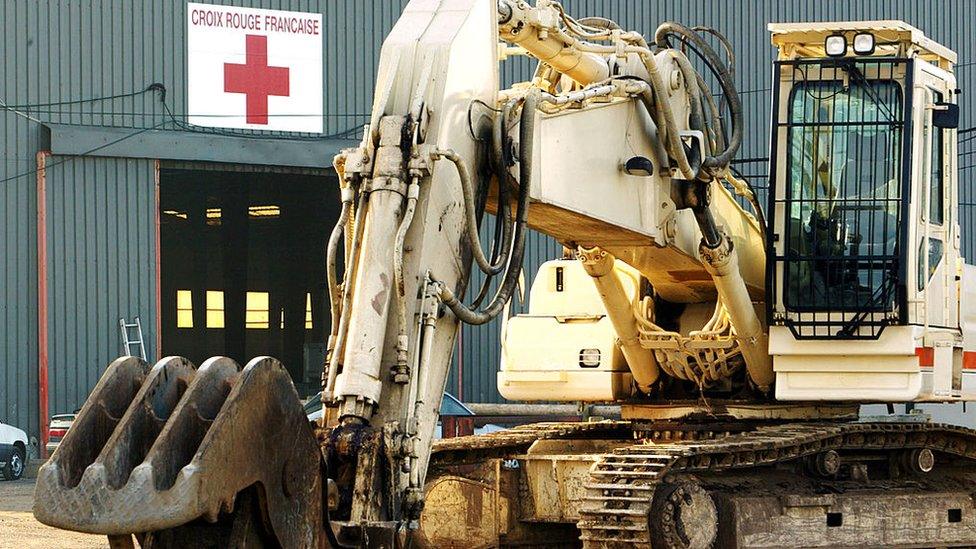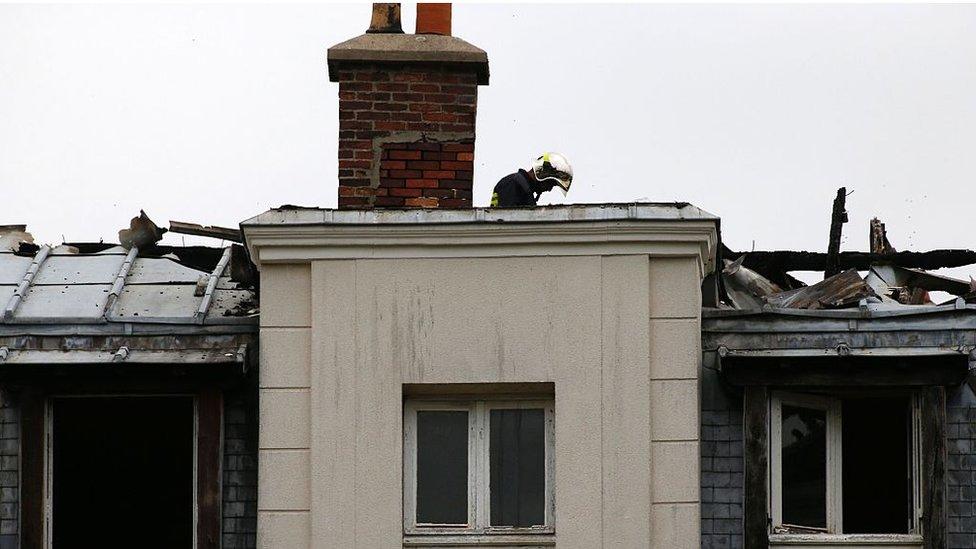What next after the Jungle?
- Published

The French authorities have already made detailed plans for moving migrants out of the Jungle camp near Calais.
They want this to be a swift and efficient operation. The police, NGOs and asylum services have had many weeks to prepare, and on paper, all is in place.
A fleet of 150 buses has been hired. Over the next few days, these will disperse to points across France, bearing migrants to new Welcome and Orientation Centres (CAOs).
The Jungle population - estimated at 7,000 - has had plenty of warning. Many of them have taken the route to CAOs already. But in the past the move was voluntary. Now the migrants are told they have no choice.
They must board the buses and stay on them, or face being sent to "administrative centres" - the first step (in theory if not in practice) to possible deportation.
The authorities hope that in two days they will have shifted 4,000 people. By the end of the week, they want the sandy lowlands of north Calais to be returning to their natural state.
But what happens next? Does emptying the Jungle mean the Calais problem is solved once and for all? Or will the same process soon start all over again?
After all, just because the migrant camp has been closed, that does not mean the draw of England is any the less strong.
The example of a previous Calais crisis is in everyone's minds - Sangatte.
From 1999 to 2002, a few miles to the south of the Jungle on the other side of Calais, a former Eurotunnel hangar was turned into a Red Cross holding centre for migrants.
Originally conceived for just a few hundred, by the end it was holding more than 1,500 Afghans, Iraqi Kurds and Kosovans. Every week, many were being smuggled into the UK.
The French and UK governments agreed that Sangatte was acting as a magnet. For migrants, it was a necessary stepping stone on their route to the UK, because it was here that contacts and arrangements were made for the final illegal crossing.
And so, in December 2002, it was closed down. The UK agreed to take in some 1,300 Kurds and Afghans and France coped with the rest.

The Sangatte Red Cross migrant centre was demolished in December 2002
But it was not long before makeshift camps started appearing again in and around Calais: and with the huge growth of immigration to Europe of the last few years, the Jungle was born.
The French authorities hope that, even though the numbers now are much greater than at Sangatte, this time things will be different.
The main difference, they say, is that today there is a properly organised system for dealing with the migrants.
Across the country, more than 400 CAOs have been created: in former gendarme barracks, disused hospitals and training-centres, and out-of-season holiday villages
Once installed there the migrants will, if they wish, make applications for asylum. Those who do will be moved to other more established structures: Reception Centres for Asylum Seekers (CADAs).
Unaccompanied minors, the subject of heated last-minute exchanges with the UK, get different treatment. France wants the UK to take in the estimated 500 who say they have family there. The rest will go to yet other holding centres in France.
The planning is thorough, the intentions are good, but there are many imponderables.
First, some communities have reacted badly to news that they must take in ex-Jungle inhabitants.

A proposed migrant centre was set on fire in Forges-les-Bains, outside Paris
At Champtercier for example, a village of 800 in the mountains of southeast France, people are worried about the sudden change to their tranquil way of life. A holiday centre there is to take in around 100 Eritreans and Sudanese.
"I am in two minds about it. On the one hand, we need to show common humanity. But are we really able to take in all these migrants? This is a small place which lives very quietly. Many of the inhabitants are old people, and they are the ones who get afraid," one man told Le Monde newspaper.
Elsewhere, reaction has been openly hostile. In Forges-les-Bains, outside Paris, a proposed centre was set on fire. And in the southern town of Beziers, the Front National-affiliated mayor has put up anti-immigrant posters with the words, "That's it - they're coming!"
Another worry is capacity. The new CAO centres are meant to be temporary. People are supposed to be moved quickly on to CADAs or, if they do not want to apply for asylum, then to other centres and possible expulsion.
But the process is long, and the CADAs are already near to bursting. With many of the CAOs needing to revert to other functions in the spring, many migrants risk being back living rough.
The big ambition - as with the Sangatte closure - is to eliminate the attraction of a single focal point at Calais for smugglers and migrants.

French presidential contender Alain Juppe has called for an overhaul of the system of UK passport controls on the French side of the Channel
If it works, then a lot of political and diplomatic heat will be dispersed along with the migrants.
The people of Calais will welcome a return to normality, and a point of growing tension between Paris and London will be defused.
Already Calais is an important issue in next year's presidential election in France, with the favourite Alain Juppe urging a renegotiation of the border arrangements under which UK officials process travellers in France.
If the pressure is off, and the Jungle remains empty, then this may drop down the French agenda.
But no-one should be optimistic. Everything from the past suggests that the Calais migrant problem is chronic, and liable to deteriorate.